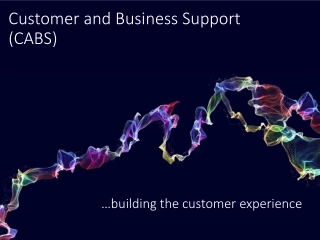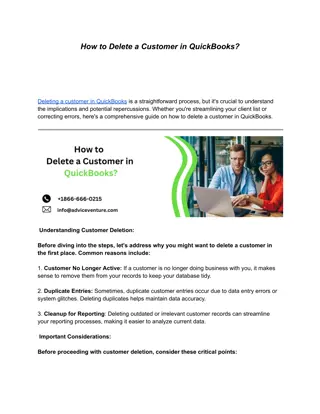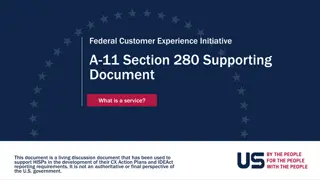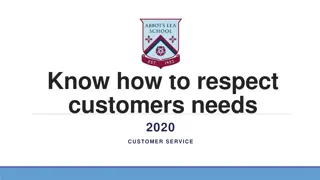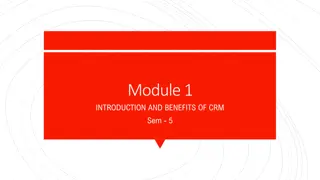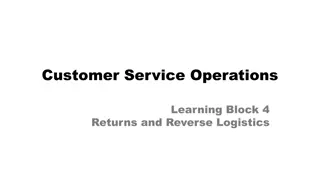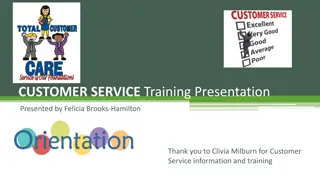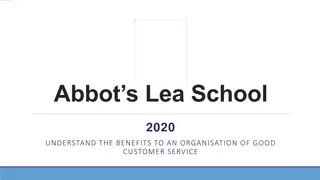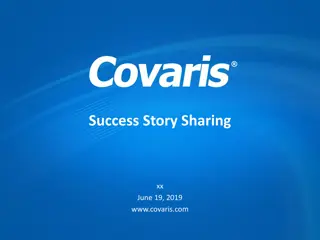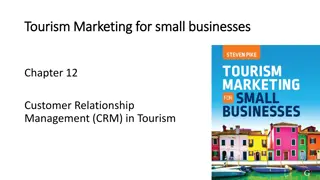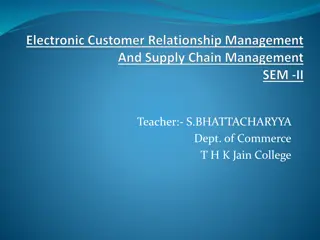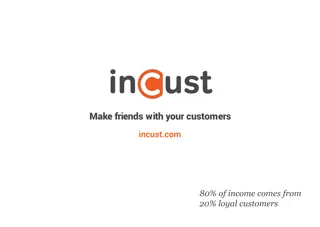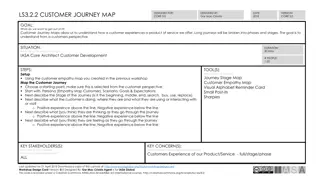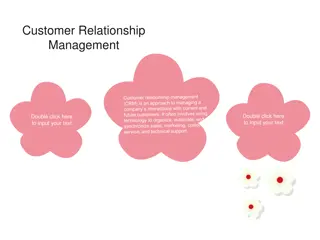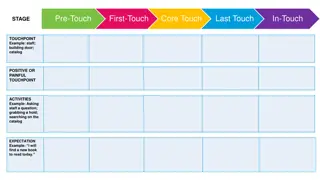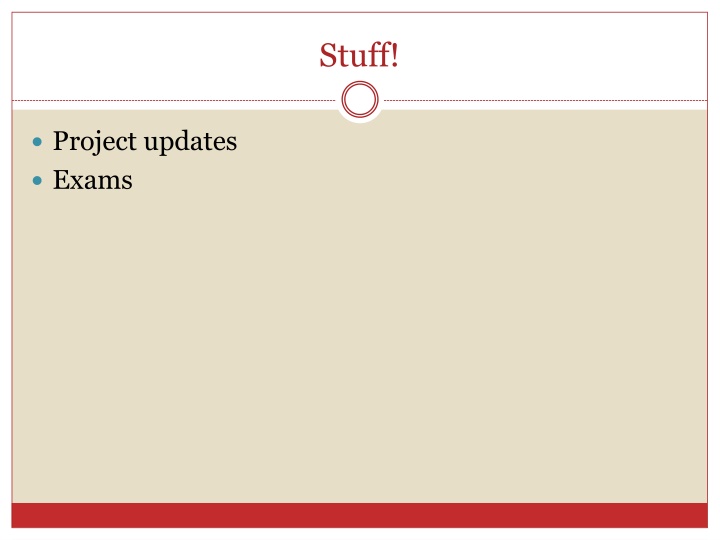
Customer Loyalty and Value Co-Creation in Business
Discover the importance of customer loyalty in driving profitability for firms, the principles of service-dominant logic, and the co-creation of value between businesses and customers. Explore how building strong relationships and delivering value propositions can enhance customer loyalty and drive long-term success in business.
Download Presentation

Please find below an Image/Link to download the presentation.
The content on the website is provided AS IS for your information and personal use only. It may not be sold, licensed, or shared on other websites without obtaining consent from the author. If you encounter any issues during the download, it is possible that the publisher has removed the file from their server.
You are allowed to download the files provided on this website for personal or commercial use, subject to the condition that they are used lawfully. All files are the property of their respective owners.
The content on the website is provided AS IS for your information and personal use only. It may not be sold, licensed, or shared on other websites without obtaining consent from the author.
E N D
Presentation Transcript
Stuff! Project updates Exams
Managing Relationships and Customer Loyalty CHAPTER 12
Why Is Customer Loyalty Important to A Firms Profitability? Customers become more profitable the longer they remain with a firm: Increase purchases and/or account balances Customers / families purchase in greater quantities as they grow Reduced operating costs Fewer demands from suppliers and operating mistakes as customer becomes experienced Referrals to other customers Positive word-of-mouth saves firm from investing money in sales and advertising Price premiums Long-term customers willing to pay regular price Willing to pay higher price during peak periods
American Express And Customer Loyalty http://www.youtube.com/watch?v=0B-Km9vAIwo
Service Dominant Logic S-D logic regards value as something co-created between the organization and the customer. It is a change in thinking from value in exchange to a value in use perspective
S-D logic and the co-creation of value Three of these premises are relevant to this course this work: FP6:The customer is always a co-creator of value FP7: The enterprise cannot deliver value, but only offer value propositions FP10: Value is always uniquely and phenomenologically determined by the beneficiary
Framework for Building Value Value Proposition Co-creation of Value Communication Encounters Outcomes Non-creation of value
Whats Happening? http://www.dailymail.co.uk/news/article- 2547254/South-Korean-woman-known-The-Diva- makes-9-400-month-streaming-eating-online-three- hours-day-manages-stay-chopstick-thin.html http://www.adweek.com/adfreak/paris-prepared- love-emergencies-breakable-flower-boxes- valentines-day-155739
Strategies for Building Relationships Core Service Provision: service foundations built upon delivery of excellent service: satisfaction, perceived service quality, perceived value Switching Barriers: customer inertia switching costs: set up costs, search costs, learning costs, contractual costs Relationship Bonds: financial bonds social bonds customization bonds structural bonds
Targeting the Right Customers o How a service business position s itself is very important o Target the right customer and match them to what firm can deliver How do customer needs relate to operations elements? How well can service personnel meet expectations of different types of customers? Can company match or exceed competing services that are directed at same types of customers? o Focus on number of customers served as well as value of each customer Some customers more profitable than others in the short term Others may have room for long-term growth
Strategies for Developing Loyalty o Bundling/Cross-selling services makes switching a major effort that customer is unwilling to go through unless extremely dissatisfied with service provider o Customers benefit from buying all their various services from the same provider One-stop-shopping, potentially higher service levels, higher service tiers etc. Examples? o
Levels of Relationship Strategies Stable pricing Bundling and cross selling Volume and frequency rewards 1. Integrated information systems Continuous relationships Financial bonds Excellent service and value 2. 4. Personal relationships Joint Social bonds Structural bonds investments Shared processes and equipment Social bonds among customers 3. Customization Bonds Anticipation / innovation Customer intimacy Mass customization
Strategies for Developing Loyalty Reward Based Bonds Can be financial or non-financial bonds or a combination of both Financial bonds Discounts on purchases, loyalty program rewards (e.g. promotional currency), cash-back programs Non-financial rewards Priority to loyalty program members for waitlists and queues in call centers; higher baggage allowances, priority upgrading, access to airport lounges for frequent flyers Intangible rewards Special recognition and appreciation Reward-based loyalty programs are relatively easy to copy and rarely provide a sustained competitive advantage
Strategies for Developing Loyalty Social Bonds Based on personal relationships between providers and customers Harder to and takes a longer time to build, but also harder to imitate and thus, better chance of retention in the long term Customization Bonds Customized service for loyal customers e.g. Starbucks Customers may find it hard to adjust to another service provider who cannot customize service
Strategies for Developing Loyalty Structural Bonds Mostly seen in B2B settings Align customers way of doing things with supplier s own processes Joint investments in projects and sharing of information, processes and equipment. Can be seen in B2C environment too Airlines - SMS check-in, SMS email alerts for flight arrival and departure times
Discussion Questions PAGE 389, QUESTION 1 AND 2
Strategies for Reducing Customer Defections o Deliver quality service o Reduce inconvenience and non-monetary costs o Have fair and transparent pricing o Industry specific drivers o Implement Effective Complaint Handling and Service Recovery Procedures o Increase Switching Costs o Ethical implications
Simple return on Relationship Model Customer Satisfaction Customer Retention Service organization s success

